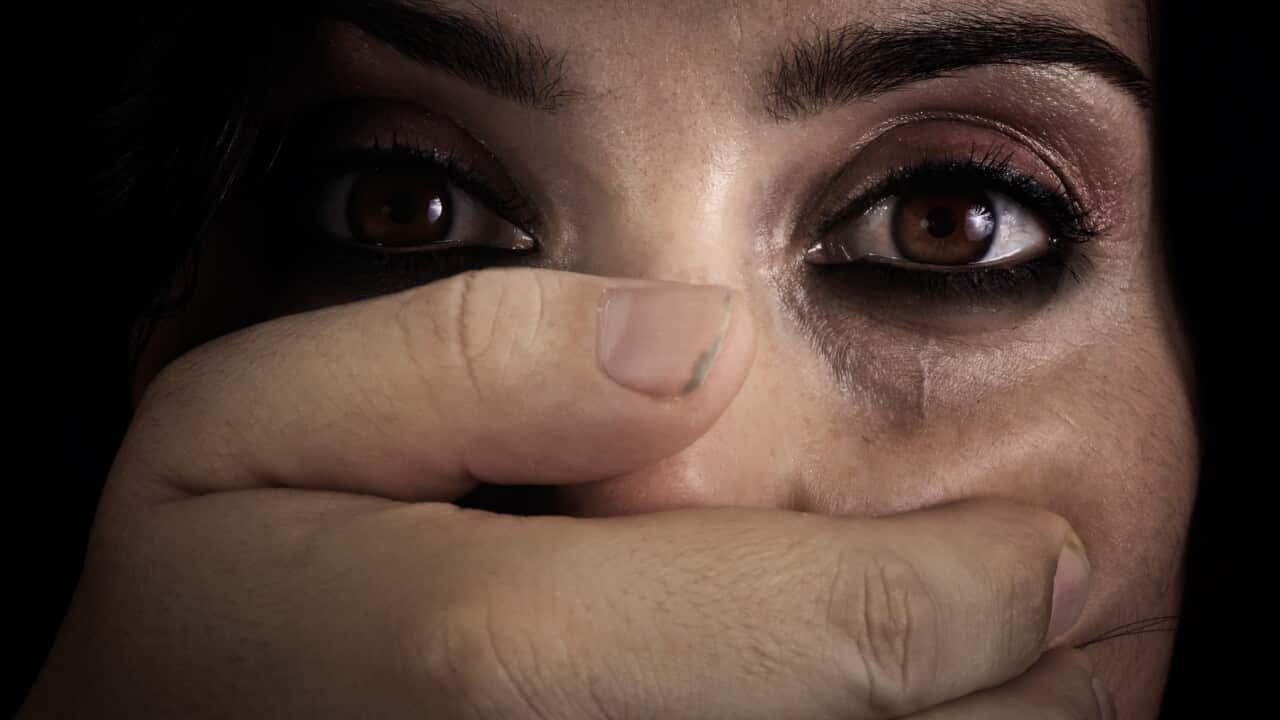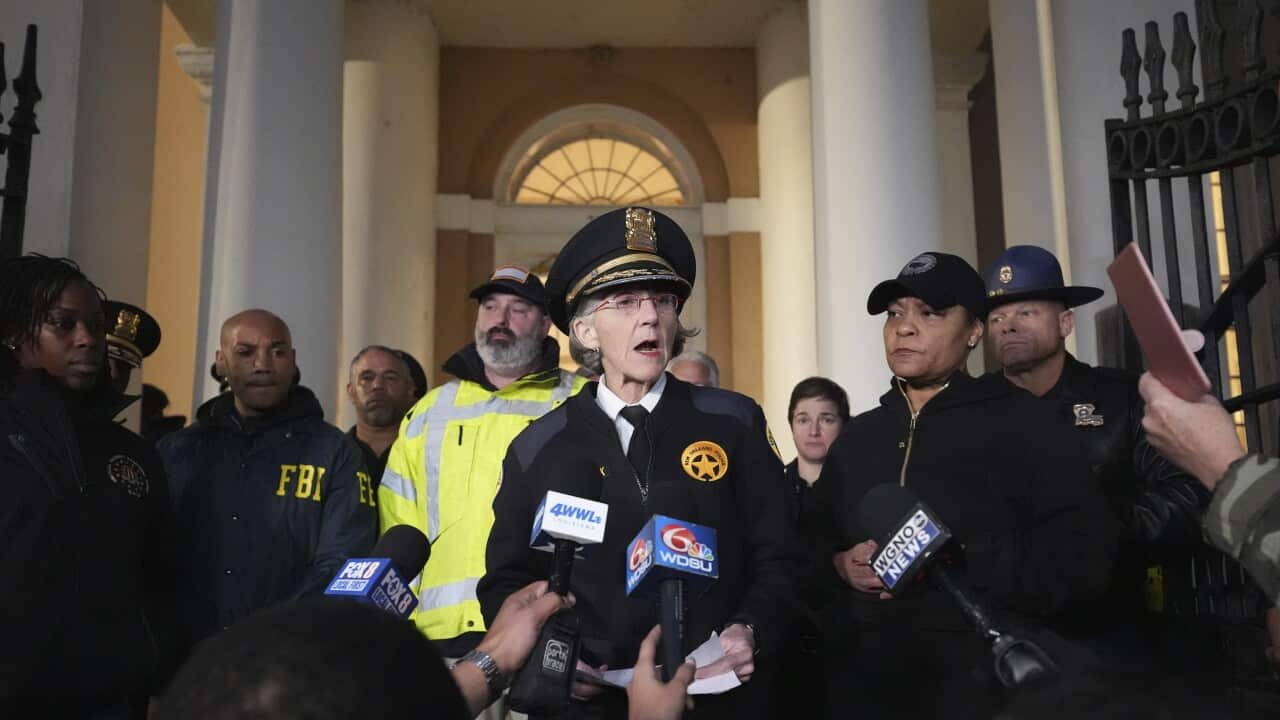English
In the grand central hall of Manchester Museum, three representatives of the Anindilyakwa community are embracing museum staff.
The handover of cultural items taken to England more than half a century ago has been a moving process for all involved.
Noeleen Lalara is an Anindilyakwa elder.
“For me, it’s emotional, I’m just talking from my heart, it’s emotional to me. I’m happy and I’m proud for my people.”
The 174 items being returned to country include baskets, spears, armbands, and intricately decorated shell dolls, which have inspired the present-day Groote Island community to create new dolls, strengthening cross-generation bonds.
Maicie Lalara is an Anindilyakwa woman.
“We do learning on country with the school kids, going out collecting the shells, painting it with okra… the kids loved it and we carry on following our ancestors.”
The items had been collected in the 1950s by English anthropologist Professor Peter Worsley, who was researching the lives of Aboriginal people and travelled to Groote Island.
His daughter Deborah attended today’s handover, meeting the descendants of women his father had often mentioned to her during childhood.
“I’d heard the stories of being on Groote all my life, he continued to talk about that time all his life… I just wish he could know that this is what’s happened.”
Professor Worsley donated his collection to Manchester Museum when he retired in the 1980s.
Over the past three years, museum experts travelled to Groote, and worked with the Anindilyakwa Land Council to determine where the items should be kept.
Georgie Young is the museum’s Head of Collections.
“There is a different quality to a return process when you are dealing with real people face to face and really listening. The emotion at the ceremony today has been carried through the whole process of working together. We know this matters, we can feel it.”
It’s hoped this close collaboration will serve as a model for future repatriation projects; most British museums aren’t as willing to facilitate the return of culturally significant items.
Leonard Hill is the acting CEO of the Australian Institute of Aboriginal and Torres Straight Islander studies.
“Events such this and relationships and opportunities in returning material such as this provides a level of awareness to the importance of returning cultural material back home. I hope it provides a bit of a trigger to other institutions that there is genuine goodwill and willingness on communities and institutions like AIATSIS to work with partners overseas to return materials.”
There are an estimated 39,000 Indigenous artefacts on display and in museum storerooms across the United Kingdom.
Manchester Museum has several hundred in its collection, so these 174 are just a drop in the pond.
But each individual item is of great importance to the community that receives it, as Anindilyakwa woman Amethea Mamarika explains.
“Seeing our ancestors artefacts, first time I seen it, it made me cry.”
The items will be welcomed home with a special ceremony later this year.
Italian
Nella grande sala del Manchester Museum, tre rappresentanti della comunità Anindilyakwa abbracciano il personale del museo.
Il passaggio di opere d’arte, portate in Inghilterra più di mezzo secolo fa è stato un momento commovente per tutti quelli coinvolti.
Noeleen Lalara è una elder Anindilyakwa.
“For me, it’s emotional, I’m just talking from my heart, it’s emotional to me. I’m happy and I’m proud for my people.”
Tra i 174 oggetti riconsegnati ci sono cestini, lance, bracciali, e bambole di conchiglie finemente decorate, che hanno ispirato l’attuale comunità Groote Island a creare nuove bambole, rinforzando i legami intergeneraziononali.
Maicie Lalara è una donna Anindilyakwa.
“We do learning on country with the school kids, going out collecting the shells, painting it with okra… the kids loved it and we carry on following our ancestors.”
Gli oggetti vennero collezionati negli anni 50 dal’antropologo inglese Peter Worsley, che stava facendo una ricerca sulla vita delle popolazioni aborigene e visitò Groote Island.
Sua figlia Deborah ha presenziato alla cerimonia di restituzione e ha incontrato i discendenti delle donne di cui suo padre spesso le raccontava quando era una bambina.
“I’d heard the stories of being on Groote all my life, he continued to talk about that time all his life… I just wish he could know that this is what’s happened.”
Il professor Worsley donò la sua collezione al Manchester Museum quando andò in pensione negli anni 80.
Negli ultimi tre anni, gli esperti del museo sono andati a Groote, e hanno lavorato con l’amministrazione dell’Anindilyakwa Land per determinare dove gli oggetti sarebbero stati collocati.
Georgie Young è la responsabile delle collezioni del museo.
“There is a different quality to a return process when you are dealing with real people face to face and really listening. The emotion at the ceremony today has been carried through the whole process of working together. We know this matters, we can feel it.”
Si spera che questa stretta collaborazione possa servire come modello per futuri reimpatri; molti musei inglesi non sono così propensi ad agevolare la restituzione di oggetti che hanno un valore culturale.
Leonard Hill è amministratore delegato pro tempore dell’Australian Institute of Aboriginal and Torres Straight Islander studies.
“Events such this and relationships and opportunities in returning material such as this provides a level of awareness to the importance of returning cultural material back home. I hope it provides a bit of a trigger to other institutions that there is genuine goodwill and willingness on communities and institutions like AIATSIS to work with partners overseas to return materials.”
Si stima ci siano 39mila artefatti indigeni in mostra e nei magazzini in tutto il Regno Unito.
Il Manchester Museum ne ha diverse centinaia, quindi questi 174 sono solo una goccia nell’oceano.
Ma ogni singolo oggetto riveste una grande importanza per la comunità che lo riceve, come spiega la donna Anindilyakwa Amethea Mamarika.
“Seeing our ancestors artefacts, first time I seen it, it made me cry.”
Agli oggetti in questione verrà riservato un caldo bentornato con una speciale cerimonia alla fine dell’anno.




